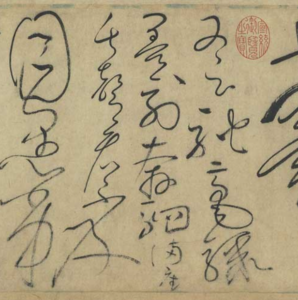 The Huntington Library, Art Museum, and Botanical Gardens in San Marino hosts Huiwen Lu, professor of art history at National Taiwan University, in “Wild Cursive Calligraphy, Poetry, and Buddhist Monks in the Eighth Century and Beyond,” an online event on Thursday, September 30.
The Huntington Library, Art Museum, and Botanical Gardens in San Marino hosts Huiwen Lu, professor of art history at National Taiwan University, in “Wild Cursive Calligraphy, Poetry, and Buddhist Monks in the Eighth Century and Beyond,” an online event on Thursday, September 30.
Professor Lu will take the audience into the strange and enchanting world of wild cursive calligraphy when it first appeared in China in the late seventh and early eighth centuries. He will look at the development of this script in history as it went from being perceived as a magical act unattainable by human power to a specialized skill manageable by learning.
Wild cursive calligraphy is one of many sub-styles of the Chinese Cursive script, where entire characters may be written without lifting the brush from the paper at all, and frequently flow into one another. Strokes are modified or eliminated completely to facilitate smooth writing and to create a beautiful, abstract appearance.
Cursive script originated as a natural evolution and response to the aesthetic potential of brush and ink. Characters in Cursive Script with drastic simplifications require specialized knowledge to be recognized.
Retaining a great capacity for artistic expression, wild cursive calligraphy transformed over time as personal identity, intention, and choice of historical models varied in the hands of individual calligraphers.
The event will be held via Zoom and is free to attend, but reservations are required. To reserve your spot, go to www.huntington.org/events/





